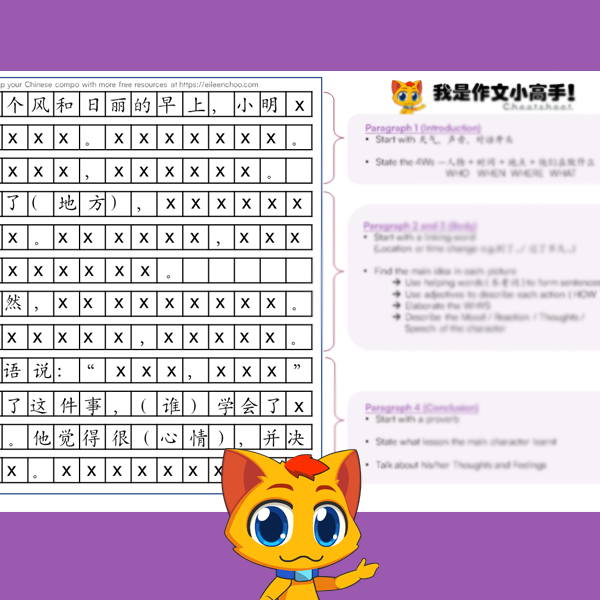
Chinese Comprehension in Singapore Primary Schools
One essential part of the Chinese language curriculum in Singapore is Chinese comprehension.
In this blog post, we will explore the importance of primary school Chinese comprehension in Singapore and how it contributes to students’ language proficiency.
What is Chinese Comprehension
First, let’s talk about what Chinese comprehension is in primary school. Chinese comprehension is the ability to understand the meaning of a piece of Chinese text and this can be in the form of a dialogue, a notice/announcement, a piece of narrative etc.
The Chinese language curriculum exposes our students to these various texts in increasing complexities through lower primary (Primary 1 and 2), middle primary (Primary 3 and 4) and upper primary (Primary 5 and 6 PSLE).
Students are then required to interpret what they’ve read and demonstrate their understanding through answering a series of questions questions based on them.
How Chinese Compre Enhances Language Proficiency
How does Chinese comprehension help develop a student’s language skills and overall language proficiency?
In these comprehension exercises, students don’t just read – they supercharge their reading abilities, enrich their vocabulary, and refine their comprehension and communication skills.
To understand the Chinese passages, they’ll need to recognize extensive sets of vocabulary that they’ve learnt in class. The passages themselves also expose students to a wider range of vocabulary. These enables our students to expand their vocabulary bank and help them use more precise and appropriate terms in their writing and communication.
When it comes to answering comprehension questions, it’s not just about responding – it’s about articulating thoughts and ideas in Chinese. This dual process hones writing skills, refines grammar, and fosters critical thinking as students analyze and interpret the deeper meanings within the texts.
This exposure isn’t just about language; it’s a journey that broadens our students’ knowledge and understanding of the Chinese language, shaping them into confident and adept language users.
Conclusion
In wrapping up our exploration of Chinese comprehension in Singapore’s primary schools, it’s clear that this essential component of language learning goes beyond reading and answering questions. Ultimately, it sets the foundation for our students’ lifelong journey of language learning.
How do you see Chinese comprehension benefiting your child’s language skills? Share your thoughts in the comments below!



